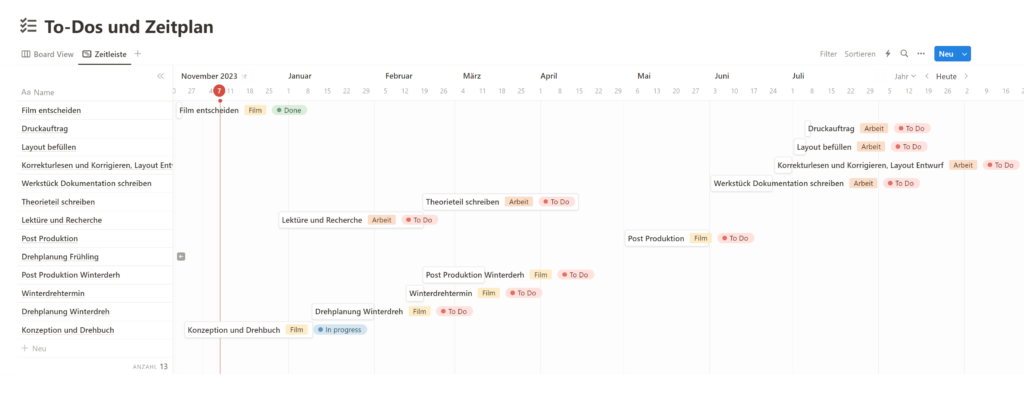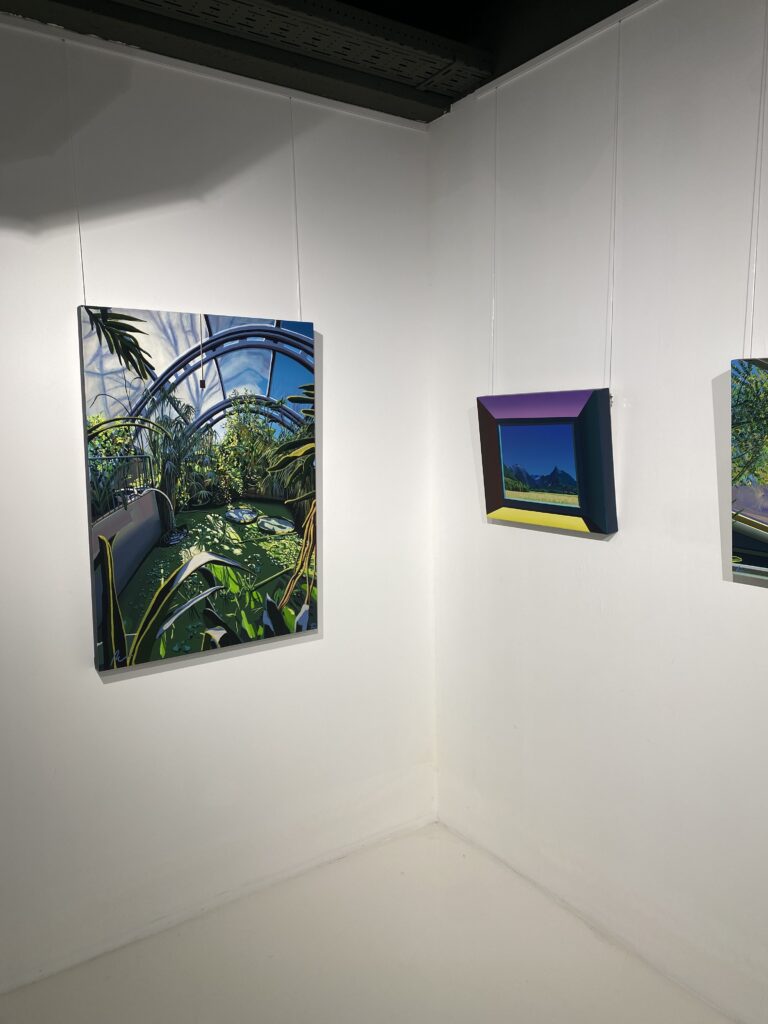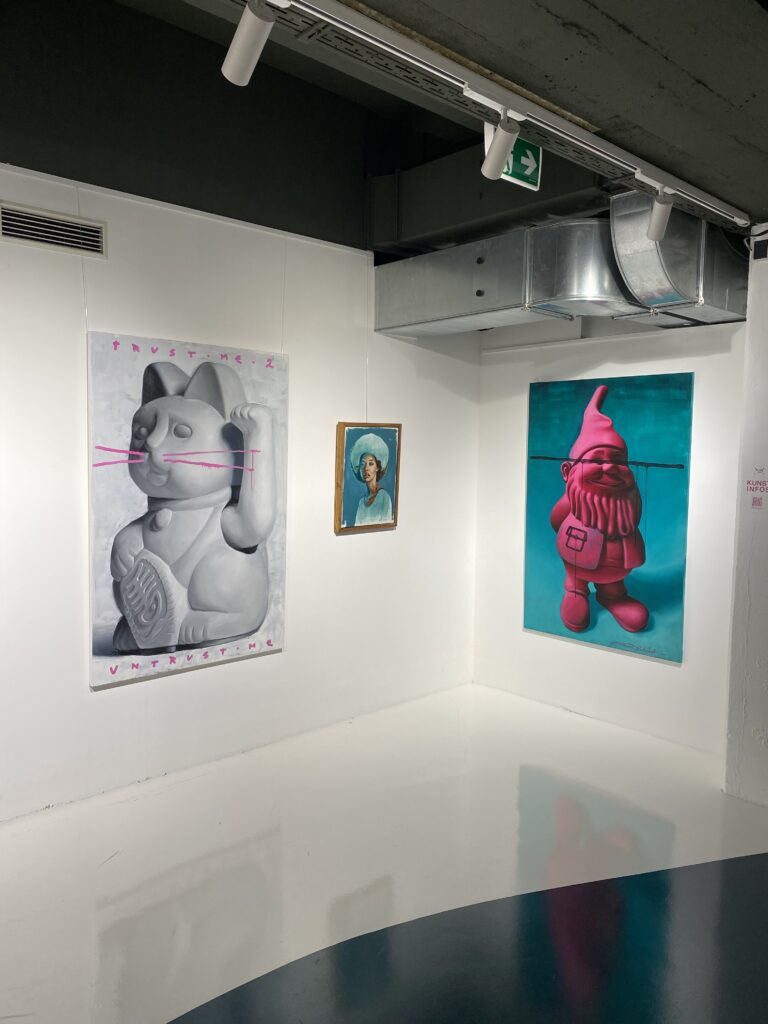German:
Titel: Die Rolle von Pattern im UI-/UX-Design: Erforschung innovativer Alternativen zur Verbesserung des Nutzererlebnisses und die kritische Auseinandersetzung mit bestehenden Designmustern.
Problemstellung: Die aktuelle gängige Praxis der Erstellung von UI-/UX Designs konzentriert sich auf die Verwendung von Designmustern. Diese sollen die Benutzerinteraktion passend unterstützen und erleichtern. Allerdings gibt es eine wenig Forschung darüber, ob abweichende oder Nicht-Patterns eine innovative Alternative darstellen könnten, die den Alltag interessanter gestalten und Nutzer vor manipulativem Design schützen könnten. Wären UI-/Ux Designer besser beraten die Benutzeroberfläche nach innovativen Lösungen zu gestalten oder den Designmustern zu folgen?
Stand der Forschung: Bisherige Forschung im Bereich des UI-/UX-Designs hat sich vorrangig auf bewährte Designmuster konzentriert, die aufgrund ihrer intuitiven Natur und einfachen Handhabung bevorzugt werden. Es gibt jedoch begrenzte Erkenntnisse darüber, ob die Verwendung von Nicht-Patterns oder abweichende Designmuster das Nutzererlebnis positiv beeinflussen könnten.
Fragestellung der Thesis: Die vorliegende Arbeit zielt darauf ab, die Rolle von Nicht-Patterns im UI-/UX-Design zu untersuchen und zu ergründen, ob sie innovative Alternativen bieten können, um das Benutzererlebnis zu verbessern und die Interaktion mit digitalen Produkten zu verbessern.
Hypothese bzw. Zielsetzung: Die Hypothese für die Arbeit ist, dass durch die Verwendung von Nicht-Patterns für Benutzeroberflächen, das Benutzererlebnis passender gestaltet werden könnte. Das Ziel besteht darin, die Auswirkungen von neuen Pattern, die nicht den gängigen Designpattrn folgen, auf die Benutzerinteraktion zu erforschen. Es gilt herauszufinden, ob sie eine positive Alternative zu etablierten Designmustern darstellen können.
Obwohl sich UI-Pattern nach menschlicher Wahrnehmung und kognitiven Fähigkeiten richten, können sie in verschiedenen Kulturen unterschiedlich sein, da sie oft von kulturellen Normen, Gewohnheiten und Erwartungen der Benutzer beeinflusst werden. Daher möchte ich untersuchen, welches Geschlecht von welchem Designpattern mehr überzeugt ist. Gibt es hier signifikante Unterschiede, außer in Designfragen, die oft stereotyp als “männlich” betrachtet werden, wie dunkle Farbpaletten oder männlich konnotierte Bilder? Haben Benutzer des jeweils anderen Geschlechts Schwierigkeiten bei der Interaktion mit bestimmten Elementen der Benutzeroberfläche? Wie stark ist das Designpattern von der männlich dominierten Welt der Technologie beeinflusst? Natürlich sollten bei der Gestaltung von Benutzeroberflächen Geschlechterklischees vermieden werden, aber leiten sich Pattern möglicherweise auch von männlichen Denkweisen ab? Dazu möchte ich untersuchen, woher das Muster ursprünglich stammt und welche Vorschläge Frauen und Männer für ein neues Design haben.
Es wäre auch interessant zu erfahren, welche Muster den Testpersonen selbst einfallen oder welches Design sie als sinnvoll erachten. Mein Ansatz zielt darauf ab herauszufinden, ob Designmuster von Designern geprägt sind oder ob sie tatsächlich unserer Wahrnehmung entsprechen. Wie verändert sich unser Verhalten, wenn sich das Muster ändert?
Bezug zur Theorie: Die Arbeit stützt sich auf bestehende Theorien des UI-/UX-Designs, kognitiver Psychologie und menschlicher Wahrnehmung, um die Auswirkungen von abweichenden Designmustern auf das Nutzerverhalten zu analysieren. Sowie etablierte Methoden zum Test von Userexperience wie A/B Tests.
Methodik: Die Forschung wird durch eine Kombination aus qualitativen und quantitativen Methoden durchgeführt. Es werden A/B-Tests durchgeführt, in denen Probanden verschiedene Designvarianten, präsentiert werden, um deren Präferenzen und Nutzererfahrungen zu bewerten. Darüber hinaus werden Beobachtungen, Interviews und Fragebögen genutzt, um das Nutzerverhalten und ihre Wahrnehmungen zu erfassen.
Mit Hilfe des Prototyps soll die Frage beantwortet werden, ob Designpattern der beste Weg sind, Benutzererlebnisse zu gestalten. Ein bestehendes Pattern soll mit einem vollkommen neuen und abweichenden Pattern verglichen werden. Die Vorteile von Design Patterns sind unbestritten, aber ein größerer Mut zum Unkonventionellen wäre für Benutzer:innen eventuell interessant.
Eine der Herausforderungen bei intuitiven Innovationen ist, dass Menschen nur ungern von vertrauten Mustern und Verhaltensweisen abweichen. Neue Muster haben daher oft Schwierigkeiten, sich zu etablieren. Wenn diese jedoch klare Vorteile gegenüber den alten Mustern aufweisen, sollte die Nutzerakzeptanz steigen. Deshalb sollen bestehende Websites und Apps getestet werden, indem innovative Designmuster mit bestehenden verglichen werden. Sowie fiktive User-Flows ohne sinnvollen Content, um Benutzer für neue Vorschläge zu öffnen.
Material: Als Material werden lediglich bestehende digitale Produkte und Benutzeroberflächen, wie Websites, Apps verwendet. Außerdem ein eigens entwickelte Prototype mit unterschiedlichen Designmustern und Nicht-Patterns. Ein weiterer Schritt besteht in der Implementierung eines Designmuster-Baukastens. Dieser soll es den Testern ermöglichen, das Layout selbst zu verändern und kreativ zu sein. Mit Figma sollte es fast jedem möglich sein, vorgefertigte Elemente anzuordnen, ohne sich intensiv mit dem Programm beschäftigen zu müssen.
Gliederung:
- Einleitung
- Theoretischer Hintergrund: UI-/UX-Design und Designmuster
- Die Rolle von Designpattern im UI/UX Design: Theoretische Konzepte und Hypothesen
- Methodik: A/B Testing und Testen mit Testpersonen
- Analyse und Ergebnisse der Tests
- Fazit: Auswirkungen der Pattern und Alternativen zu Designpatter
- Schlussfolgerung und Ausblick
English:
he role of patterns in UI/UX design: exploring innovative alternatives to improve the user experience and critically analysing existing design patterns.
Problem: The current common practice of creating UI/UX designs is centred on the use of design patterns. These are intended to appropriately support and facilitate user interaction. However, there is little research on whether deviant or non-patterns could be an innovative alternative that could make everyday life more interesting and protect users from manipulative design. Would UI/Ux designers be better advised to design the user interface according to innovative solutions or to follow the design patterns? State of research: Previous research in the field of UI/UX design has primarily focused on proven design patterns that are favoured for their intuitive nature and ease of use. However, there is limited evidence on whether the use of non-patterns or deviating design patterns could positively influence the user experience. Thesis question: This thesis aims to investigate the role of non-patterns in UI/UX design and whether they can provide innovative alternatives to enhance the user experience and improve interaction with digital products.
Hypothesis or objective: The hypothesis for the thesis is that by using non-patterns for user interfaces, the user experience could be designed more appropriately. The aim is to explore the effects of new patterns that do not follow the established design patterns on user interaction. The aim is to find out whether they can represent a positive alternative to established design patterns. Although UI patterns are based on human perception and cognitive abilities, they can be different in different cultures as they are often influenced by cultural norms, habits and user expectations. Therefore, I would like to investigate which gender is more convinced of which design pattern. Are there significant differences here, except in design issues that are often stereotypically considered “masculine”, such as dark colour palettes or images with a masculine connotation? Do users of the other gender have difficulties interacting with certain elements of the user interface? How strongly is the design pattern influenced by the male-dominated world of technology? Of course, gender stereotypes should be avoided when designing user interfaces, but are patterns possibly also derived from male mindsets? I would like to investigate where the pattern originally came from and what suggestions women and men have for a new design. It would also be interesting to find out which patterns occur to the test subjects themselves or which design they consider useful. My approach aims to find out whether design patterns are characterised by designers or whether they actually correspond to our perception. How does our behaviour change when the pattern changes?
Relation to theory: The work draws on existing theories of UI/UX design, cognitive psychology and human perception to analyse the effects of deviating design patterns on user behaviour. As well as established methods for testing user experience such as A/B tests.
Methodology: The research is carried out using a combination of qualitative and quantitative methods. A/B tests are carried out in which test persons are presented with different design variants in order to evaluate their preferences and user experiences. In addition, observations, interviews and questionnaires are used to record user behaviour and their perceptions. The prototype will be used to answer the question of whether design patterns are the best way to design user experiences. An existing pattern is to be compared with a completely new and different pattern. The advantages of design patterns are undisputed, but a greater courage to be unconventional might be interesting for users. One of the challenges of intuitive innovation is that people are reluctant to deviate from familiar patterns and behaviours. New patterns therefore often find it difficult to establish themselves. However, if they have clear advantages over the old patterns, user acceptance should increase. Existing websites and apps should therefore be tested by comparing innovative design patterns with existing ones. As well as fictitious user flows without meaningful content to open users up to new suggestions.
Material: Only existing digital products and user interfaces, such as websites and apps, are used as material. In addition, a specially developed prototype with different design patterns and non-patterns. A further step is the implementation of a design pattern construction kit. This should enable testers to change the layout themselves and be creative. With Figma, it should be possible for almost anyone to arrange prefabricated elements without having to work intensively with the programme.
Structure:
1. introduction
2 Theoretical background: UI/UX design and design patterns
3. the role of design patterns in UI/UX design: theoretical concepts and hypotheses
4 Methodology: A/B testing and testing with test persons
5. analysis and results of the tests
6 Conclusion: Effects of the patterns and alternatives to design patterns
7 Conclusion and outlook




